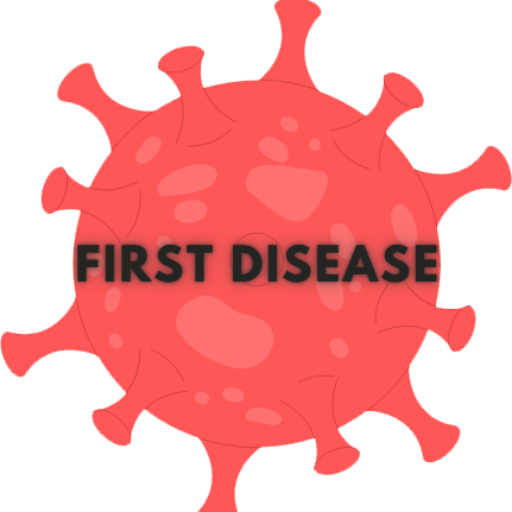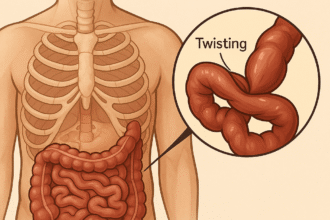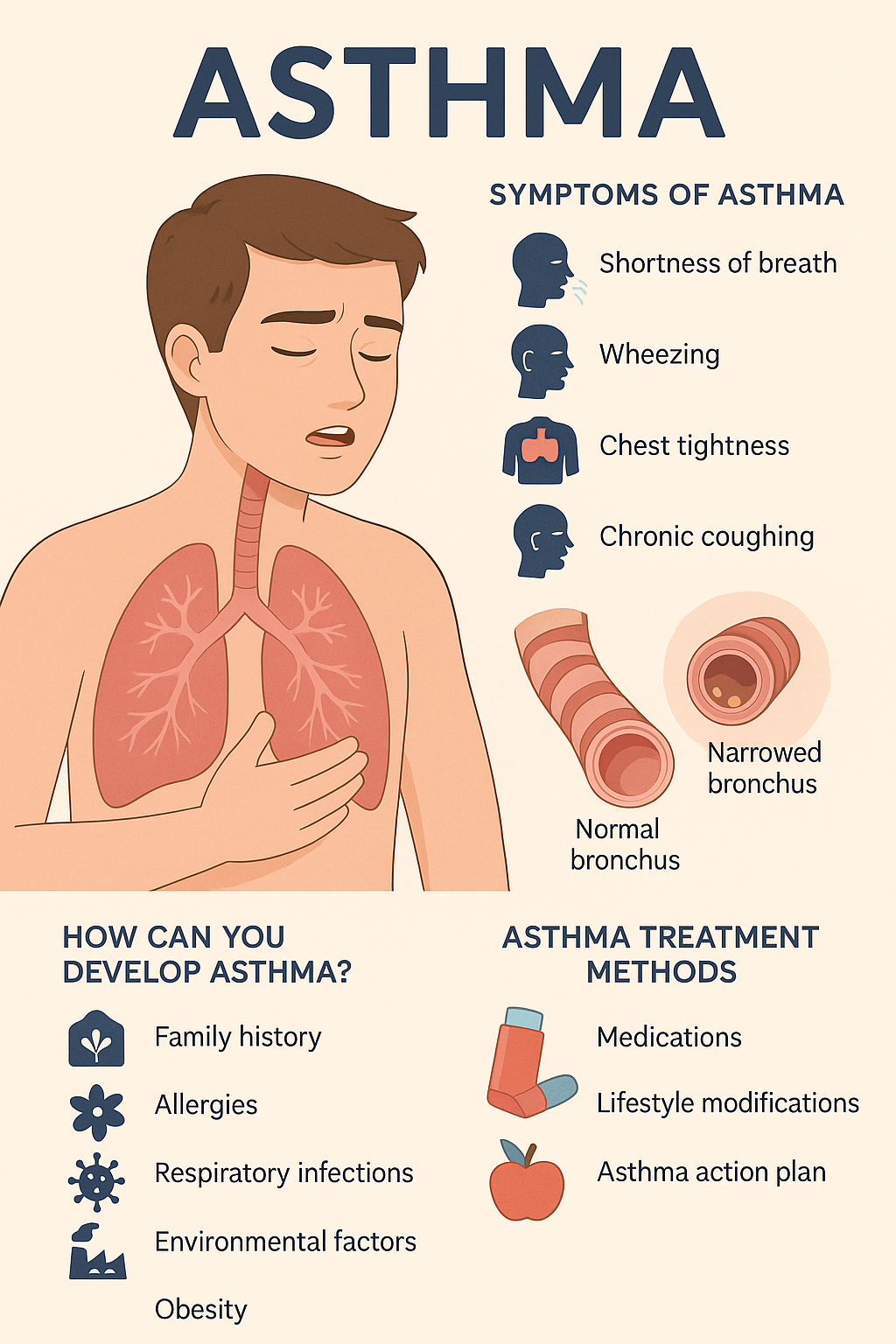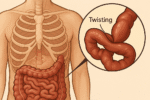1. Leg Pain , General Overview(Diseases A–Z)
Short Summary:
Leg pain refers to any discomfort felt between the hip and the foot. It can stem from muscle overuse, nerve irritation, joint degeneration, or circulatory problems. While often the result of minor injuries, leg pain may also be an early warning sign of more serious medical conditions like deep vein thrombosis (DVT) or peripheral artery disease (PAD).
What is this condition?
To begin with, leg pain is a widespread issue that can affect anyone regardless of age or activity level. The pain might be constant or occasional and may feel like aching, throbbing, cramping, burning, or tingling. Depending on the cause, it may originate from the muscles, joints, bones, nerves, or blood vessels—or be referred from another part of the body.
What are the symptoms?
In many cases, symptoms vary based on the underlying issue. However, common signs include:
-
Pain in the thigh, calf, shin, or foot
-
Muscle cramps or spasms
-
Tingling, numbness, or a “pins and needles” sensation
-
Swelling or inflammation
-
Weakness or heaviness in the leg
-
Difficulty walking or standing for long periods
What causes it?
There are many possible causes, and they can often be grouped into several key categories:
-
Muscle overuse or strain: From running, heavy lifting, or prolonged standing
-
Inflammation: Such as tendonitis or bursitis
-
Nerve compression or damage: Including sciatica or peripheral neuropathy
-
Joint degeneration: Arthritis in the knee, hip, or ankle
-
Circulatory issues: DVT, varicose veins, or PAD
-
Trauma: Including sprains, fractures, or dislocations
-
Referred pain: Often stemming from the lower back or pelvic region

Who is more likely to experience it?
Some groups are more prone to leg pain due to lifestyle or medical history. For instance:
-
Athletes and those with physically demanding jobs
-
People with a sedentary lifestyle
-
Individuals with diabetes, heart disease, or vascular conditions
-
Older adults with joint degeneration or balance issues
-
Office workers with poor posture or prolonged sitting habits
How is it diagnosed?
To determine the root cause, healthcare providers typically begin with a physical examination and medical history. From there, they may use:
-
Imaging: X-rays, MRI, or ultrasound to check for structural damage
-
Nerve tests: Like EMG or nerve conduction studies
-
Vascular exams: Doppler ultrasound for blood flow problems
-
Blood tests: To rule out infection or inflammation
-
Spine evaluations: If the pain appears to be radiating from the back
What are the treatment options?
Treatment largely depends on the diagnosis, but may include:
-
Resting the leg and avoiding aggravating activities
-
Applying ice or heat
-
Over-the-counter pain relief (NSAIDs or muscle relaxants)
-
Physical therapy and rehabilitation exercises
-
Compression stockings to improve circulation
-
Anticoagulants (blood thinners) in cases of DVT
-
Surgery for fractures, severe nerve compression, or blocked arteries

Can it be prevented?
The good news is that many cases of leg pain can be prevented. Consider these strategies:
-
Stay active and stretch regularly
-
Maintain a healthy posture
-
Take breaks from long periods of sitting or standing
-
Wear proper footwear
-
Keep chronic conditions like diabetes and hypertension under control
-
Support spinal health to avoid referred leg pain
Is it contagious?
No—leg pain itself is not contagious. It arises from physical, neurological, or circulatory issues, not from infectious causes.
2. Symptom Checker – Based on Symptom: Leg Pain
❓ What diseases can cause this symptom?
When experiencing leg pain, it’s important to consider a range of possible conditions:
-
Muscle or tendon injuries (strain, tear, tendonitis)
-
Nerve-related issues (sciatica, spinal stenosis)
-
Joint disorders (arthritis, bursitis)
-
Circulatory diseases (DVT, PAD, varicose veins)
-
Bone trauma or fractures
-
Infections (cellulitis, abscess, osteomyelitis—rare)
-
Pain referred from the spine, hips, or pelvis
🧑⚕️ When should I see a doctor?
Although many cases of leg pain are harmless, you should seek medical attention if:
-
The pain is sudden and severe
-
There’s visible swelling, redness, or warmth
-
You experience numbness or weakness
-
You’ve suffered an injury
-
The leg becomes pale or cool to the touch
-
The symptoms last more than a few days
🚨 Emergency or not?
Emergency Situations:
-
Leg pain with chest pain or shortness of breath (possible blood clot)
-
Sudden, intense swelling or discoloration (possible DVT)
-
Inability to move the leg or bear weight
-
Severe injury or visible deformity

Non-Emergency (Can Wait):
-
Mild soreness after physical activity
-
Occasional leg cramps
-
Minor bruises or aches
3. Age-Based Overview – Leg Pain

👶 In Infants
Although rare, leg pain in infants may signal congenital bone conditions or birth-related nerve injuries. Any signs of swelling, reduced movement, or fever require urgent care.
🧒 In Children
Children often experience leg pain from play-related falls or growth spurts. It’s also important to monitor for early signs of conditions like juvenile arthritis or infections.
🧑 In Teenagers
In teenagers, sports injuries like shin splints or muscle overuse are common. Prolonged screen time and poor posture can also contribute to pain.
👨🦰 In Adults
For adults, causes often include sedentary habits, repetitive strain injuries, or vascular problems like varicose veins. Back issues, such as herniated discs, can also lead to radiating leg pain.
👵 In Elderly
Among the elderly, degenerative joint diseases, fractures from falls, and circulation issues such as PAD are frequent culprits. Nerve damage (neuropathy) is also more common in this age group.
Don’t forget to check our page for similar and different diseases or treatments.










One Comment
There’s a quiet elegance in the way you express your thoughts, each word chosen with such care and precision.